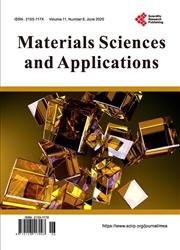Effect of Model Height and Model Position on Forming Table on Mouthguard Thickness in Thermoforming Using Circular Frame
引用次数: 1
Abstract
Effectiveness and safety of mouthguards are greatly affected by its thickness. The aim of this study was to clarify the effect of model height and model position on the forming table on the mouthguard thickness in thermoforming using a circular frame. Mouthguards were thermoformed using 4.0-mm-thick ethylene-vinyl-acetate sheets and a vacuum forming machine. The sheet was sandwiched between circular frames and fixed to the clamp of the forming machine. Working models were two types of hard gypsum models trimmed so that the height of the anterior part was 25 mm (Model A) and 30 mm (Model B). The model was placed with its anterior rim positioned 40 mm (P40), 30 mm (P30), 20 mm (P20), or 10 mm (P10) from the front of the forming table. Differences in the reduction rate of the thickness due to the model height and model positions were analyzed by two-way ANOVA and Bonferroni’s multiple comparison test. Differences depending on the model height were observed at P40 at the incisal edge and P30, P20, and P10 on the labial surface, and the reduction rate of the thickness was significantly smaller in Model A (P < 0.01). As the distance from the model anterior rim to the front of the forming table was smaller, the rate of the thickness of the incisal edge and the labial surface decreases became larger. The rate of decrease in the thickness of the cusp and buccal surface was the smallest at P20. This study indicated that the difference in the thickness of the single-layer mouthguard depending on the model position on the forming table is affected by the model height. However, that is only the anterior part of the mouthguard, and the difference in thickness reduction rate is less than 5%. Additionally, in order to perform stable forming, it is useful to increase the distance from the model to the frame, and it is important to position the part whose thickness is desired to be maintained in the center of the forming table.圆形框架热成形中模型高度和模型位置对成形台护板厚度的影响
护齿器的厚度直接影响其使用效果和安全性。本研究的目的是澄清模型高度和模型位置在成形台对护齿厚度的影响,在热成型使用圆形框架。使用4.0 mm厚的乙烯-乙烯-醋酸酯片材和真空成型机热成型护齿。板材夹在圆形框架之间,固定在成型机的夹具上。工作模型是两种类型的硬石膏模型,其前部高度分别为25mm(模型A)和30mm(模型B)。模型放置时,其前缘位置分别为距成型台前方40mm (P40)、30mm (P30)、20mm (P20)或10mm (P10)。采用双因素方差分析和Bonferroni多重比较检验分析模型高度和模型位置对厚度降低率的影响。在切缘P40和唇面P30、P20、P10处观察到不同模型高度的差异,模型A的厚度减少率明显小于模型A (P < 0.01)。随着模型前缘到成形台前的距离越小,切缘和唇面厚度减小的速率越大。牙尖、颊面厚度在P20时下降幅度最小。研究表明,模型在成形台上的位置对单层齿套厚度的影响受模型高度的影响。然而,这只是护齿器的前部,厚度减少率的差异小于5%。此外,为了实现稳定的成形,增加模型到框架的距离是有用的,并且将希望保持厚度的零件放置在成形台的中心是很重要的。
本文章由计算机程序翻译,如有差异,请以英文原文为准。
求助全文
约1分钟内获得全文
求助全文

 求助内容:
求助内容: 应助结果提醒方式:
应助结果提醒方式:


